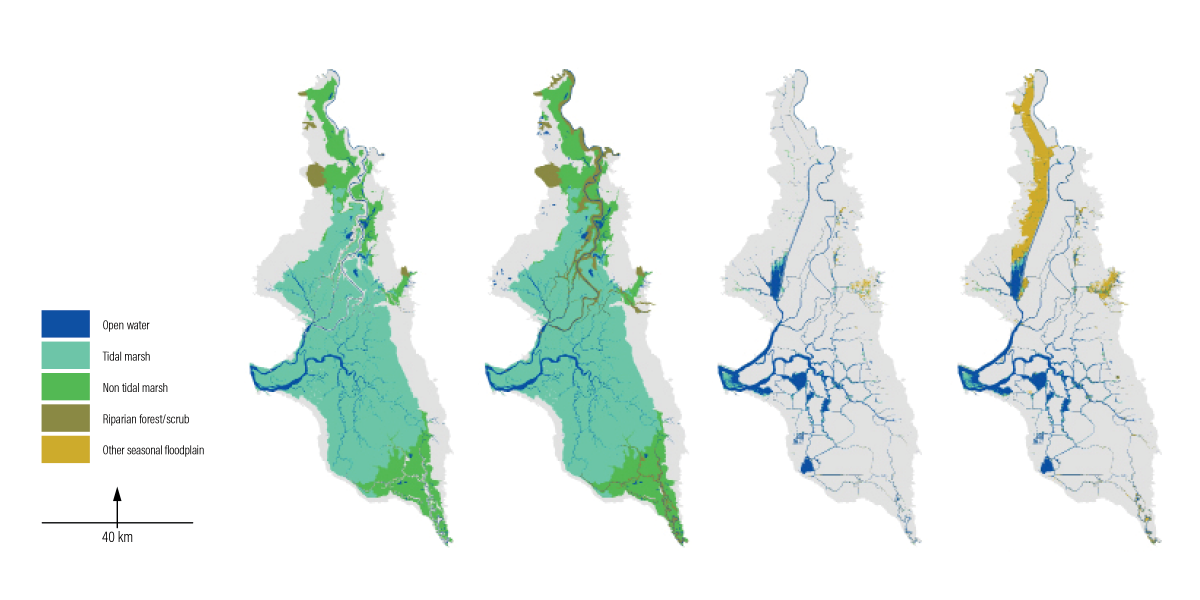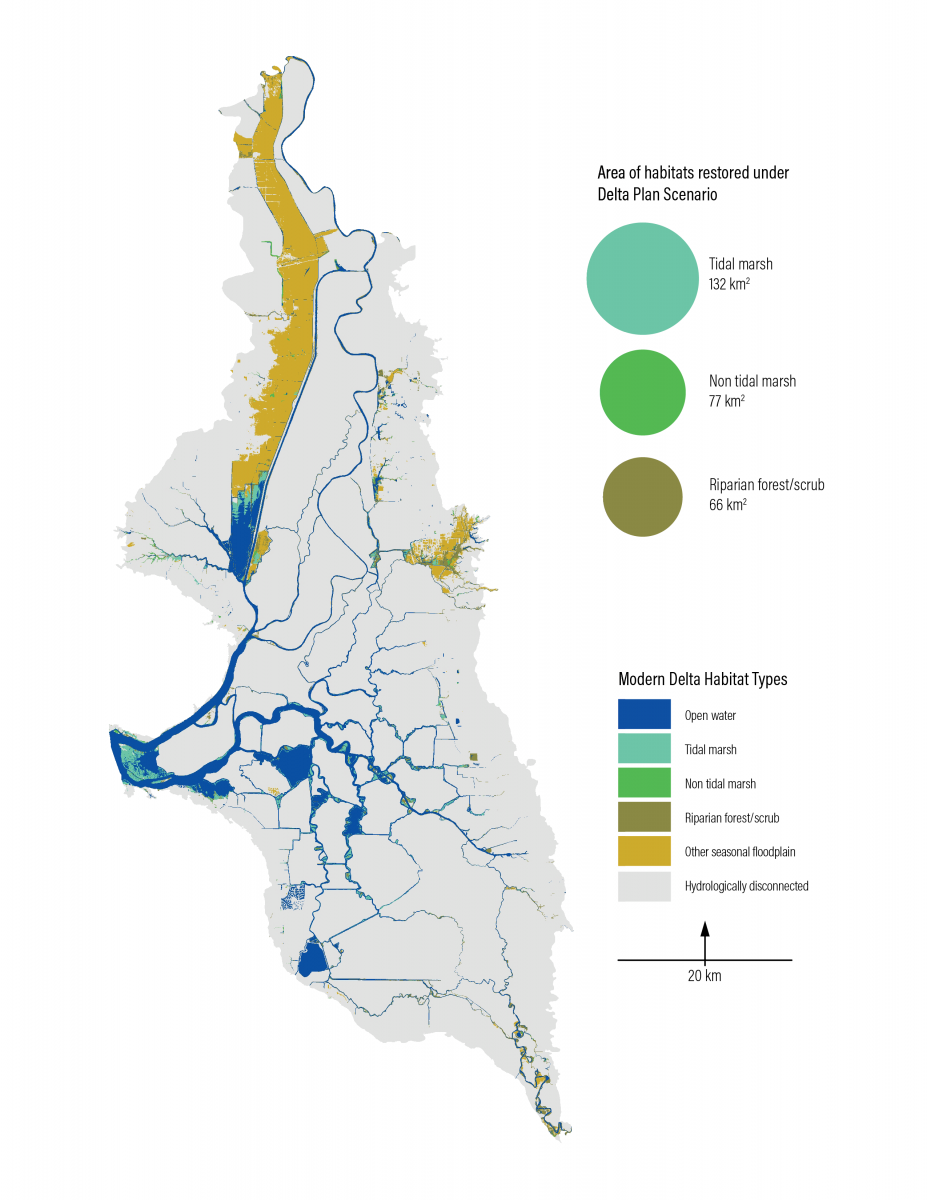Primary production in context
Estuaries and freshwater wetlands are some of the most productive ecosystems on Earth. These systems support a diverse array of plants, algae, invertebrates, fish, and other aquatic consumers, in turn providing resources for birds, humans, and other connected ecosystems. At the base of the estuarine food web, algae and plants in wetlands and open water fix carbon from the atmosphere into biomass through photosynthesis. This primary production is a first-order control on the carrying capacity for fish and other aquatic consumers.
The historical Sacramento-San Joaquin Delta was a highly productive freshwater estuary. As the largest tidal marsh on the North American Pacific coast, the extensive wetlands of the historical Delta provided habitat and year-round food for fish and other wildlife. Primary production in the historical Delta supported California’s largest salmon runs, bird migrations on the Pacific Flyway, now-threatened, endemic species such as Delta smelt, hundreds of other wildlife species, and many people in the Native American communities of the region.
In the modern Delta, primary production has largely been converted to human use
Wetland conversion to agriculture has led to a near-complete loss of tidal and non-tidal marshes, eliminated many small tidal channels and straightened large ones, and reduced hydrological connectivity between land and water. The Delta of today remains highly productive as an agricultural region, but at great cost to the native aquatic ecosystem. While Delta phytoplankton production is known to be low relative to other estuaries, the impacts of wetland loss on primary production across a suite of producers has received little study.
Although these habitat losses have profoundly altered Delta ecosystems, the modern Delta supports many ecological functions and services. The Delta is home to a range of invertebrates, fish, birds, and other aquatic organisms. However, it is well recognized that changes to the status quo are necessary to maintain and improve ecological health, water supply reliability and the resilience of the Delta’s landforms relative to earthquakes and flooding. Management actions to improve primary productivity, such as habitat restoration, enable managers to support desired ecological communities, particularly when and where they are limited by food availability. Managing effectively for primary productivity requires empirical information on the relative production value of habitat types and configurations (such as marsh size and channel network structure).
Project goals and scope
The Delta Landscapes Primary Production project addresses the question: How has landscape change in the Delta altered the quantity and character of primary production that is potentially available for the aquatic food web? To evaluate historical changes in primary production, we estimated primary production in the historical (early 1800s) and modern Delta (early 2000s) for wet and dry years, as a result of changes in the extent of hydrologically connected habitats. We quantified changes in Delta-wide production from major producer groups and habitat types, which translate to changes in the portfolio of production entering the aquatic food web.
This project was designed with decision makers in mind. Metrics of primary production in the historical Delta—the magnitude and composition of primary production entering the historical food web—provide meaningful context for restoration and management decisions. By comparing production rates in wet vs. dry years, we can identify habitat types in the Delta where primary production is responsive to water-availability variations. Additionally, our framework and areal productivity rates can be used to estimate the effect of restoration targets on Delta-wide primary production.
Report and Appendix
In Delta Landscapes Primary Production, completed in 2020, SFEI researchers and a panel of expert scientists evaluated how landscape change in the Delta has affected the primary production at the base of the aquatic food web.










